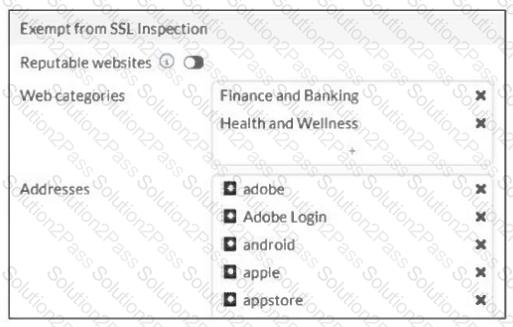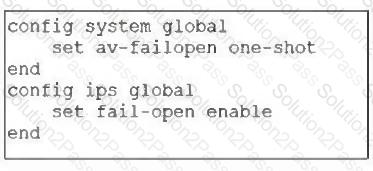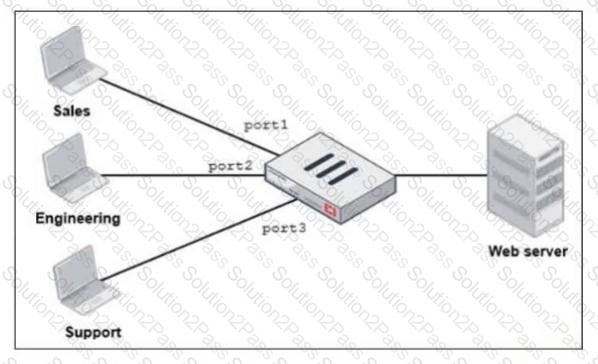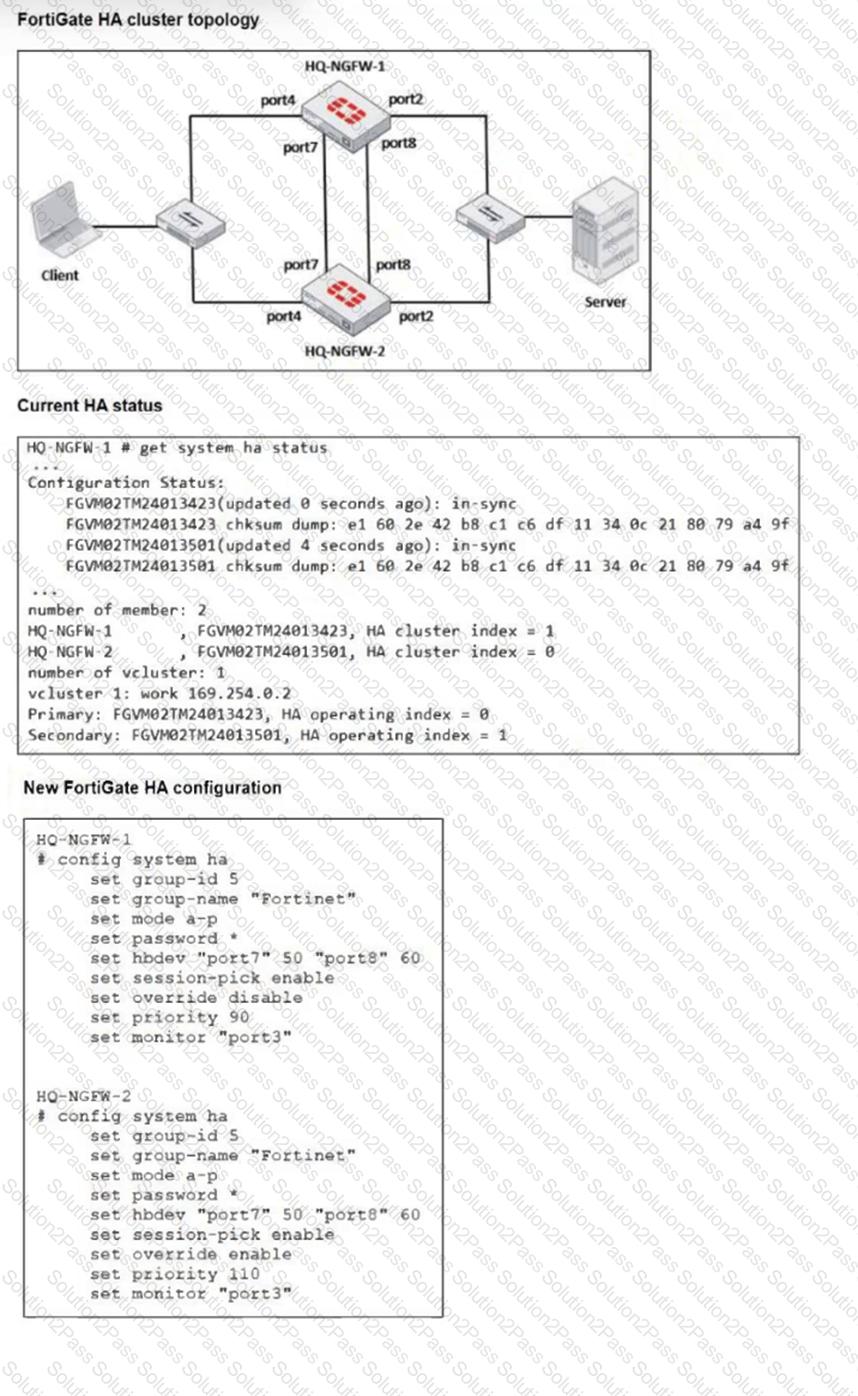FCP_FGT_AD-7.6 Fortinet FortiGate 7.6 Administrator FCP_FGT_AD-7.6 Free Practice Exam Questions (2025 Updated)
Prepare effectively for your Fortinet FCP_FGT_AD-7.6 FortiGate 7.6 Administrator FCP_FGT_AD-7.6 certification with our extensive collection of free, high-quality practice questions. Each question is designed to mirror the actual exam format and objectives, complete with comprehensive answers and detailed explanations. Our materials are regularly updated for 2025, ensuring you have the most current resources to build confidence and succeed on your first attempt.
Refer to the exhibit.

The predefined deep-inspection and custom-deep-inspection profiles exclude some web categories from SSL inspection, as shown in the exhibit.
For which two reasons are these web categories exempted? (Choose two.)
Refer to the exhibit.

Based on this partial configuration, what are the two possible outcomes when FortiGate enters conserve mode? (Choose two.)
Refer to the exhibit.

FortiGate has two separate firewall policies for Sales and Engineering to access the same web server with the same security profiles.
Which action must the administrator perform to consolidate the two policies into one?
Refer to the exhibits.

An administrator has observed the performance status outputs on an HA cluster for 55 seconds.
Which FortiGate is the primary?
A remote user reports slow SSL VPN performance and frequent disconnections. The user is located in an area with poor internet connectivity.
What setting should the administrator adjust to improve the user's experience?
A FortiGate firewall policy is configured with active authentication, however, the user cannot authenticate when accessing a website.
Which protocol must FortiGate allow even though the user cannot authenticate?
A network administrator is reviewing firewall policies in both Interface Pair View and By Sequence View. The policies appear in a different order in each view.
Why is the policy order different in these two views?
An administrator wants to configure dead peer detection (DPD) on IPsec VPN for detecting dead tunnels. The requirement is that FortiGate sends DPD probes only when there is no inbound traffic.
Which DPD mode on FortiGate meets this requirement?
When configuring firewall policies which of the following is true regarding the policy ID?
Which two statements are correct when FortiGate enters conserve mode? (Choose two.)
FortiGate is operating in NAT mode and has two physical interfaces connected to the LAN and DMZ networks respectively.
Which two statements about the requirements of connected physical interfaces on FortiGate are true? (Choose two.)
Which two statements describe characteristics of automation stitches? (Choose two.)
A new administrator is configuring FSSO authentication on FortiGate using DC Agent Mode.
Which step is NOT part of the expected process?
Refer to the exhibits.

Based on the current HA status, an administrator updates the override and priority parameters on HQ-NGFW-1 and HQ-NGFW-2 as shown in the exhibit.
What would be the expected outcome in the HA cluster?
